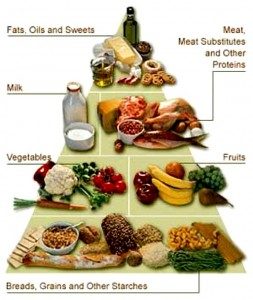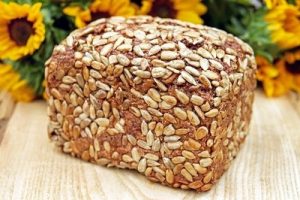Controlling Gestational Diabetes
This article will describe standard signs and symptoms of gestational diabetes, how it is diagnosed and just how it’s handled. It is going to show how a gestational diabetic diet program is very important for controlling diabetes in conjunction with other treatments.
So how do we go about Controlling Gestational Diabetes?

It’s important to know there are steps you can take to reduce the likelihood of developing gestational diabetes before even trying for a baby.
For pregnant women diagnosed with gestational diabetes, there are many lifestyle and dietary measures that can be taken to help bring blood sugar levels under control, and these are often all that is needed.
Most pregnant women are screened for gestational diabetes between weeks 24 and 28 of their pregnancy with a glucose challenge test. This involves drinking a sugary drink before testing the blood to see how well the body manages to regulate the blood sugar levels.
When a pregnant woman is diagnosed with gestational diabetes, it means her blood sugar levels are too high. This is concerning, because it can have negative implications for the baby as well as the mother if not treated and brought under control.
Uncontrolled high blood sugar levels in pregnancy can cause babies to grow larger that usual and increase the chances of respiratory distress, bone fractures, nerve palsies, low blood sugar levels and early birth. For the pregnant mother there is a higher risk of placental trouble as well as a higher risk of perineal tearing or caesarean due to the large size of the baby.
The likelihood of these issues can be reduced if gestational diabetes is identified and blood sugar levels brought under control. It is possible to prevent or reduce the impact of gestational diabetes by maintaining a healthy weight, healthy diet and regular exercise. The Majority of women with gestational diabetes will find their blood sugar levels return to normal after giving birth.
Despite this, women who have had gestational diabetes are more likely to develop type 2 diabetes later in life. Additionally, women who have had gestational diabetes during pregnancy face a 35 to 50 per cent chance that it will return in future pregnancies.
What Causes Gestational Diabetes?

Insulin resistance impairs the ability of insulin to perform its job effectively, although slight insulin resistance during pregnancy is normal and allows more sugar and nutrients to be available for the baby. Problems develop if these sugar levels become too high. A pregnant woman can also get gestational diabetes if her pancreas is simply not making enough insulin to keep blood sugar levels stable.
Pregnant women can have gestational diabetes without displaying any physical symptoms, which is why it is so important to be tested during pregnancy. However, some women may display symptoms, particularly if they display another form of diabetes they were not previously aware of. These symptoms may include:
- Increased thirst
- Increased urination
- Increased hunger
- Blurred vision.
Many pregnant women, experience some of these symptoms as a normal part of pregnancy, so speak to your doctor if you have any concerns.
Treatment for Gestational Diabetes
Gestational diabetes can be treated with dietary and lifestyle changes and these can prevent the disease recurring in future pregnancies, potentially warding off type 2 diabetes in the future. If you are diagnosed with gestational diabetes, you will usually be closely monitored by your doctor and will need to check your blood sugar levels with a machine at home.
Exercise
Regular exercise before and during pregnancy is a great way to help keep maternal blood sugar under control. Pregnant women can safely do as much exercise as they feel comfortable with. Studies show that as little as 15 minutes 3 times per week can be beneficial, although 30 minutes of daily exercise is recommended when there are no other pregnancy complications.
Walking is excellent and can be enjoyed right up until the last few days. Swimming during pregnancy is wonderful as it takes weight off the joints and back and brings welcome relief in later pregnancy. Cycling on a stationary bike is also considered very safe. Avoid exercising during the mid-day heat and pushing yourself beyond your existing fitness / stamina levels.
Diet

There’s are variety of smartphone apps that can give you a very accurate indication of your carbohydrate intake day by day. Obtaining a book outlining a low-GI diet will provide you with tables listing the glycaemic index and load of most foods.
As well as these changes, ensuring high dietary fibre levels is also very important. Hence a diet rich in fruit, vegetables, wholegrains, legumes, lean meat, eggs, nuts and seeds healthy fish and pure water is ideal.
Lifestyle
Stress increases hormones that encourage the release of sugar into the blood stream. Ancient cultures have long understood the need for pregnant women to be relaxed and happy and in our busy western society, pregnant women need to ensure they actively work at reducing stress. Meditation, prenatal yoga, exercise and /or counselling can help reduce stress levels.
Sleep helps to reset hunger hormones, which will encourage healthy food choices. Pregnant women will often experience disrupted sleep so, were possible, try to get to bed that little bit earlier or nap through the day.
Prevention
Ideally, women planning to get pregnant should seek good preconception care in order to avoid gestational diabetes altogether. Women who have had gestational diabetes in prior pregnancies can draw motivation from the knowledge that a good diet, regular exercise and weight normalization can help avoid complications from gestational diabetes in future pregnancies.
Following these healthy diet and lifestyle guidelines will put women in a better position to shine through motherhood and raise healthy children.


 Snacks and Insulin
Snacks and Insulin



 DAIRY
DAIRY BREADS
BREADS CEREALS
CEREALS A good diabetic diet has an emphasis on reducing the amount of sweet foods, especially cakes and biscuits and increase the intake of complex carbohydrates by eating more brown rice and whole foods. Medication is not always necessarily the answer to control diabetes as regular exercise and a diabetic diet is quite effective.
A good diabetic diet has an emphasis on reducing the amount of sweet foods, especially cakes and biscuits and increase the intake of complex carbohydrates by eating more brown rice and whole foods. Medication is not always necessarily the answer to control diabetes as regular exercise and a diabetic diet is quite effective.
